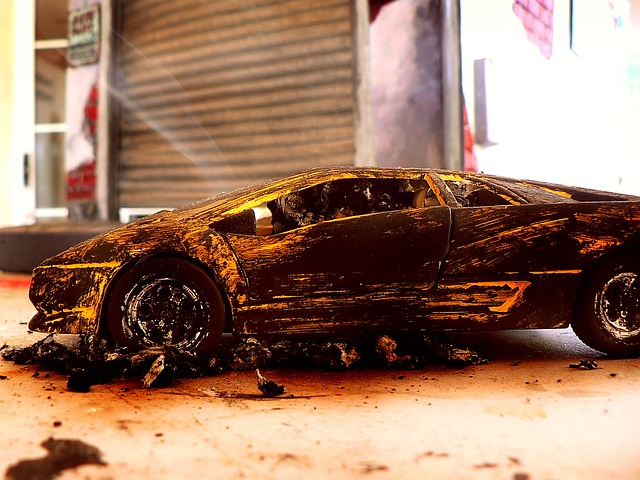The advent of autonomous vehicles (AVs) is revolutionizing motor insurance by shifting liability from drivers to vehicle systems. Insurers must adapt their risk assessment and policy structures, focusing on the safety and reliability of AV components rather than driver behavior. This transformation demands a deeper understanding of AV technology, data-driven approaches, and proactive engagement with regulatory changes and emerging risks. Both consumers and industry professionals need to stay informed and collaborate for effective coverage, ensuring trust and satisfaction in this evolving landscape.
As autonomous vehicles (AVs) transform our roads, the motor insurance industry is undergoing a significant paradigm shift. The traditional model, rooted in driver responsibility, is being challenged by a new reality where vehicle systems take the lead. This article delves into the implications of AVs on insurance, exploring how insurers are rethinking coverage and liability. From understanding the technological advancements driving this change to considering the perspectives of consumers and industry professionals, we navigate the complex landscape shaping the future of motor insurance for autonomous vehicles.
- Understanding Autonomous Vehicles' Impact on Insurance
- Traditional Insurance Models Under Scrutiny
- Shift from Driver to Vehicle Accountability
- Consumer and Industry Professional Considerations
- Navigating the Evolving Landscape of Motor Insurance
Understanding Autonomous Vehicles' Impact on Insurance

The rise of autonomous vehicles is transforming the insurance industry, compelling insurers to adapt their practices. Traditional insurance models have long relied on attributing liability to human drivers, but this dynamic shifts when vehicles operate with minimal or no human input. As these self-driving cars become more common, determining responsibility in the event of an accident becomes a complex matter.
Insurers are now facing the challenge of assessing risk and developing coverage options for autonomous vehicle systems themselves. This transition requires a deep understanding of the technology’s capabilities, limitations, and potential failures, as well as the integration of advanced safety features and decision-making processes. Staying abreast of these developments is crucial to ensure consumers have appropriate protection while enabling insurers to manage risks effectively in this new era of motoring.
Traditional Insurance Models Under Scrutiny

The traditional insurance model for motor vehicles has long been based on the premise of driver responsibility and risk assessment. Policyholders are evaluated based on their driving history, behavior, and personal factors, which determine their premiums. However, with the advent of autonomous vehicles (AVs), this paradigm is undergoing significant scrutiny. As AV technology advances, the focus shifts from individual drivers to the safety and reliability of the vehicle systems themselves.
In the current model, insurers often consider driver age, gender, location, claim history, and even credit score to calculate insurance rates. But with AVs, these factors may become less relevant. Instead, insurers are now examining aspects like vehicle sensor performance, software updates, and manufacturer guidelines to assess liability and set coverage limits. This shift requires a reevaluation of traditional risk assessment methods and a move towards more comprehensive, data-driven approaches tailored to the unique challenges posed by autonomous vehicles.
Shift from Driver to Vehicle Accountability

The advent of autonomous vehicles marks a significant paradigm shift in motor insurance, transitioning from driver accountability to vehicle system responsibility. Traditionally, insurers relied on drivers’ behavior and fault as primary determinants of coverage and premiums. However, with self-driving cars making decisions independently, assessing liability becomes more complex. Insurers now must consider the intricate workings of these systems, including sensors, algorithms, and decision-making processes, to allocate blame and establish appropriate insurance policies.
This shift necessitates a reevaluation of risk assessment methods and policy structures. Traditional models may no longer apply as vehicles become increasingly automated, requiring insurers to develop new criteria that account for the technology’s capabilities and limitations. By delving into these advancements, insurance professionals can better navigate the evolving landscape and ensure fair coverage options for consumers embracing autonomous vehicle technology.
Consumer and Industry Professional Considerations

For consumers, understanding the implications of autonomous vehicles on motor insurance is crucial. As these new technologies enter the market, individuals need to be aware of how their insurance policies might change and what coverage they require for their peace of mind. The shift from driver liability to vehicle system accountability means that policyholders should expect different terms, conditions, and pricing structures. Staying informed allows consumers to make informed decisions when choosing an insurance provider and ensuring they have adequate protection for their autonomous vehicles.
On the other side, industry professionals must stay at the forefront of these developments to offer tailored solutions. This includes staying abreast of regulatory changes, new safety standards, and emerging technologies. By reevaluating traditional models and embracing innovative approaches, insurers can adapt to the evolving needs of the market while maintaining profitability. Effective communication with consumers about these changes is also vital to foster trust and satisfaction among policyholders.
Navigating the Evolving Landscape of Motor Insurance

As autonomous vehicles glide seamlessly into our daily commutes, the motor insurance industry finds itself at a crossroads, where traditional frameworks must be re-examined. The shift from driver-centric to system-focused liability poses complex questions about who’s responsible when accidents occur—the vehicle owner, manufacturer, or software developers. This new reality demands innovative approaches to coverage and risk assessment.
Consumers and industry professionals alike need to stay abreast of these developments. Traditional insurance models may not adequately protect against potential risks associated with autonomous vehicles. Staying informed allows individuals to make informed decisions about their coverage options and prepares industry experts to offer tailored solutions, ensuring a safe and secure future for everyone on the road.
As autonomous vehicles transform the motoring landscape, the insurance industry must adapt swiftly. The transition from driver-centric to vehicle-focused liability requires insurers to reevaluate their strategies, ensuring they remain relevant in this new era. Staying informed and proactive is key for both consumers and professionals, enabling them to make informed choices and navigate the evolving motor insurance market with confidence. This changing dynamic presents a complex yet exciting challenge, shaping the future of automotive safety and protection.



